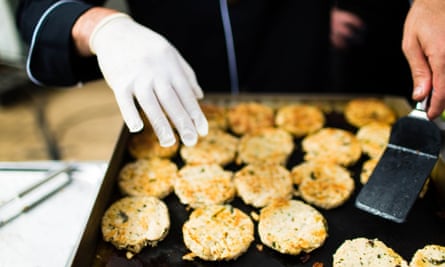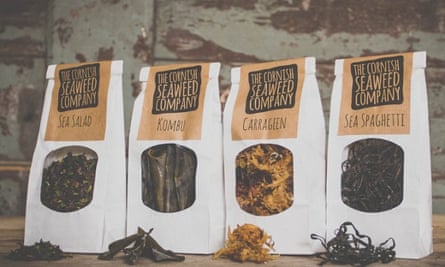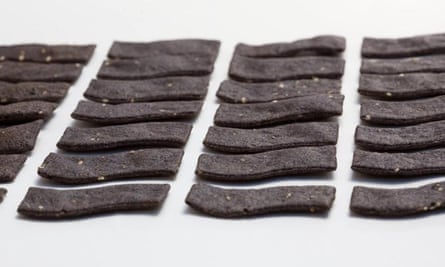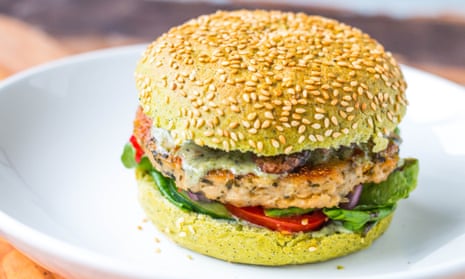When Lisette Kreischer created the Dutch Weed Burger, a plant-based burger, she and her co-founder Mark Kulsdom didn’t just want it to be a vegan alternative to meat; they wanted to encourage people to rethink their consumption habits through the promotion of a food source that’s at the bottom of the food chain – seaweed.
“We are now seeing that this method [of meat as a source of protein] is no longer sustainable towards the ecological system. The population is growing and so is the demand for proteins, but the Earth remains the same size; so we need to look at other sources,” says Kreischer, who believes that investing in synthetic, lab-grown burgers will only encourage people to keep wanting to eat meat. “Beans and other plant-based products are good sources of protein, but you still need agricultural land and fresh water to grow them ... Seaweed can be harvested in the sea.”
The Dutch Weed Burger has homegrown seaweed in its meat substitute and sauce, along with algae powder in the bun, and is available at several restaurants across the Netherlands. Kreischer and her team have also been working closely with experts from Wageningen University to ensure their cultivation practices are sustainable.

Eating seaweed is not a novel concept. Algae is a staple part of diets across Asia and in developing countries, and coastal communities have been benefiting from seaweed farming for centuries. In recent years, researchers have started to realise (pdf) that oceans need to play a greater role in the future of food.
A 2010 Wageningen University study estimated that a seaweed farm covering 180,000 square kilometres - roughly the size of Washington State - could provide enough protein for the world’s population. And scientists at Sheffield Hallam University have previously concluded that seaweed granules could replace salt (pdf) in cheese, bread, sausages and processed food such as supermarket ready meals.
Even though seaweed is constantly being touted as a superfood and has captured the imagination of trend chefs, there is generally still an aversion to eating it. Part of the problem is it’s a food that’s often been associated with poverty.
“I believe there has never been a real need to explore alternative food sources as we haven’t known hardships such as the potato famine [in Ireland, during which seaweed became part of diets],” says Tim van Berkel, co-founder of The Cornish Seaweed Company. The enterprise sustainably harvests, processes and packages seaweed to be used as an artisanal ingredient, and helps restaurants put it on the menu. “Maybe, also, the English are traditionally not well known for their extravagant food habits, as opposed to the French, and the use of seafood and shellfish in this country is very limited.”

Van Berkel admits that attitudes are changing, albeit slowly. Recipe books promoting ‘sea vegetables’ are becoming increasingly popular and a minority of people are beginning to learn how to use seaweed in everyday cooking. “It is a real education for people as well to see seaweed as a food and not as the slimy green, black stuff that you find stinking and rotting on the beach,” he adds. “So a mental, as well as an educational change, is needed.”
The answer to getting over the psychological barrier is to introduce seaweed into our diets without us even noticing.
Kreischer passionately describes her seaweed burger as “an orgasm of flavours” that includes unami and a BBQ taste due to a combination of spices used. She says it also has a juicy bite to it, which is important because how it feels in the mouth will be key to converting sceptics.
There are other start-ups creating products that disguise the flavour of seaweed to make it more palatable. A Maine-based company, Marshall Wharf Brewing Co, has developed a batch of craft beer from seaweed, which is said to taste more malty than hoppy, and a bit salty thanks to the kelp used. Meanwhile in San Francisco, Ocean’s Halo has produced a range of seaweed-based tortilla chips, including chilli lime and Korean BBQ flavours.

The company has garnered a fair bit of interest since launching the product in late 2013. Dozens of Whole Foods shops and other stores now stock their snack food. This may be a sign that people are warming to the idea of eating something that has been washed up on seashores.
“We consider seaweed to be far more accessible to mainstream America than insects. But like insects, seaweed is one of the most nutrient-dense foods on the planet and is grown with minimal environmental impact,” explains Ocean’s Halo co-founder Mike Shim. “Both have the power to address some pretty big food issues in the world, but seaweed – especially in the form of a chip – is incredibly delicious and fits into mainstream snacking trends and lifestyle.”
Read more like this:
- From vegan beef to fishless filets: meat substitutes are on the rise
- Are crickets the next foodie trend?
- Advertisement feature: The CEO of Bord Bia on Ireland’s journey towards a sustainable food system
The food hub is funded by The Irish Food Board. All content is editorially independent except for pieces labelled advertisement feature. Find out more here.
Join the community of sustainability professionals and experts. Become a GSB member to get more stories like this direct to your inbox

Comments (…)
Sign in or create your Guardian account to join the discussion